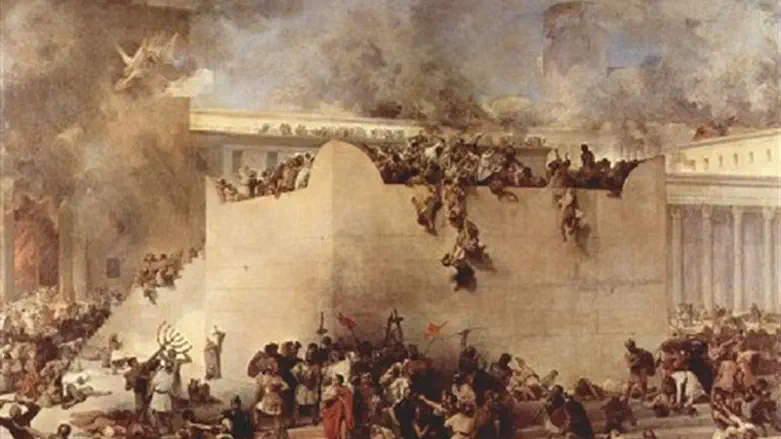
The remains of a mysterious Jewish city populated decades before the destruction of the First Temple was discovered on a site near Beit Shemesh about six months ago.
The findings not only revealed evidence of the renewal of Jewish settlement in the area following the destruction wrought by Sancheiriv but also revealed evidence of the idol worship the Jewish people engaged in at the time. The findings of figurines and idols in the Jewish city corroborated the Tanach's (Jewish Bible) attribution of the destruction of the First Temple to idolatry.
Sancheiriv (Sennacherib), the king of Assyria from 705 BCE to 681 BCE, wreaked havoc in the land of Israel during the First Temple period during the reign of the Jewish king Hezkiah. Sancheiriv waged war on Israel, destroying most of the cities in Judah, and then setting siege on Jerusalem, where a great miracle occurred when 185,000 Assyrian soldiers (the entire army) died suddenly overnight. However, while Jews continued to live in Jerusalem, Sancheirev had laid waste to Judea, conquering more than 46 cites and sending more than 200,000 Jews into exile, as described in Isaiah: "your land is desolate, your cities are burned to a crisp."
The archaeological finding near Route 38 of the remains of the Jewish city includes fragments of figurines in the shape of women and animals and a stone statue of the Egyptian god Bas. Unfortunately, the findings of evidence of idolatrous practice among the Jews at that time is not surprising.
Following Sancheirev's destruction of Judea, the righteous king Hezkiah continued to rule from Jerusalem, but when he died, his evil son Menashe took over the reign. Menashe, who was only 12 when he became king, was as unsurpassed in his evilness as his father had been in his righteousness. He built temples and altars for idol-worshippers, brought an idol into the Temple, had his own grandfather - the prophet Isaiah - killed, and distorted the basics of Jewish thought and tradition. The Jewish people were thrown into an abyss of anarchy and immorality. Although Menashe repented at the end of his life, the damage was done and the path was paved for the ultimate destruction of the First Temple years later, as the Jewish prophets had unceasingly warned the Jewish people would happen.
The findings are currently on display in the exhibition "Paths of Israel in the Kingdom of Judah" at the Bible Lands Museum in Jerusalem.